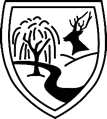- English - The Year 1 Learner (49.78KB)
Literacy is now taught through the revised Primary National Strategy and each class has a daily literacy lesson which incorporates whole class teaching and group activities.
There are four main aspects of language which are: Speaking, Listening, Reading & Writing. The Literacy curriculum is structured under 12 strands of learning as shown below.
| Speaking | Listening | Reading | Writing |
|---|---|---|---|
| Speaking | Listening and Responding | Word Recognition: Decoding (reading) & Encoding (spelling) | Word Structure and spelling |
| Creating and shaping texts | |||
| Group Discussion and Interaction | Understanding and interpreting texts | Text structure and organisation | |
| Drama | Engaging with and responding to texts | Sentence structure, punctuation and grammar | |
| Reciting Poems | Presentation | ||
Speaking & Listening
We encourage our children to express themselves clearly and confidently and aim to extend their use of language and vocabulary. This may be achieved through drama, poetry, nursery rhymes, stories and discussions in other subject areas, eg science. We encourage the children to listen carefully to one another and to adults and to value the contributions of others. We teach children how to agree and disagree with one another’s opinions respectfully.
Reading
We promote enjoyment of reading by introducing children to some of the good quality and variety of literature that is available. Parents have an important role to play, initially in the books to be found at home and in sharing stories with their children and also in sharing the books the children bring home from school.
| Some poets who inspire our learning are: | ||
| Julia Donaldson | Roger McGough | Kit Wright |
| Some authors we enjoy reading include: | ||
| Polly Dunbar | Eileen Browne | Jez Alborough |
| Martin Waddell | David Mackintosh | Cressida Cowell |
Writing
Many children begin writing at home by imitating adult writing with apparently meaningless scribble. This is an important early stage of writing and should be encouraged. At school, in addition to writing skills taught during literacy, children will be encouraged during extended writing sessions to write in a variety of settings and for a variety of purposes. We encourage the development of clear legible handwriting through teaching a particular letter formation, which leads to them joining their writing. We also teach accurate spelling, punctuation and grammar. From the early stages the children may use the computers in school as word processors.
The children work at their own levels and we would ask you to encourage your child rather than compare with others.
Phonics
We are using the Government approved Systematic Synthetic Phonic programme “Bug Club Phonics”
The scheme is organised into 5 phases of development.
- PHASE 1: General Sound DiscriminationThis phase is started in the Nursery and continued into Reception and aims for children to experience regular planned opportunities to listen carefully and talk extensively about what they hear, see and do. Children are taught and then practise tuning into sounds, listening and remembering sounds, and talking about sounds.
- PHASE 2 to PHASE 5Children entering phase 2 will have experienced a wealth of listening activities and will be able to distinguish between speech sounds and many will be able to blend and segment words orally. Through the phases the children will learn all single sounds, digraphs and trigraphs and how to use them to become effective readers and writers.
The programme is supported by online videos, demonstrations and phonic games and has a wide range of support materials for teachers, and for children to use independently.
The Daily Phonic Session
Each phonic session follows a similar teaching structure which includes:
- revision of previous learning
- new learning
- an opportunity to practise the new learning
- an opportunity to apply the new learning in another context
- assessment of learning
We support children’s reading through phonics with a range of books from “Bug Club”. These Phonic “Bug Club” books published by Pearsons are fully decodable and so enable children to apply their phonic skills in order to read successfully and confidently. The books are available to read at home both in physical form and in an online library for each child and are allocated according to assessed levels to develop fluency and the love of reading.
